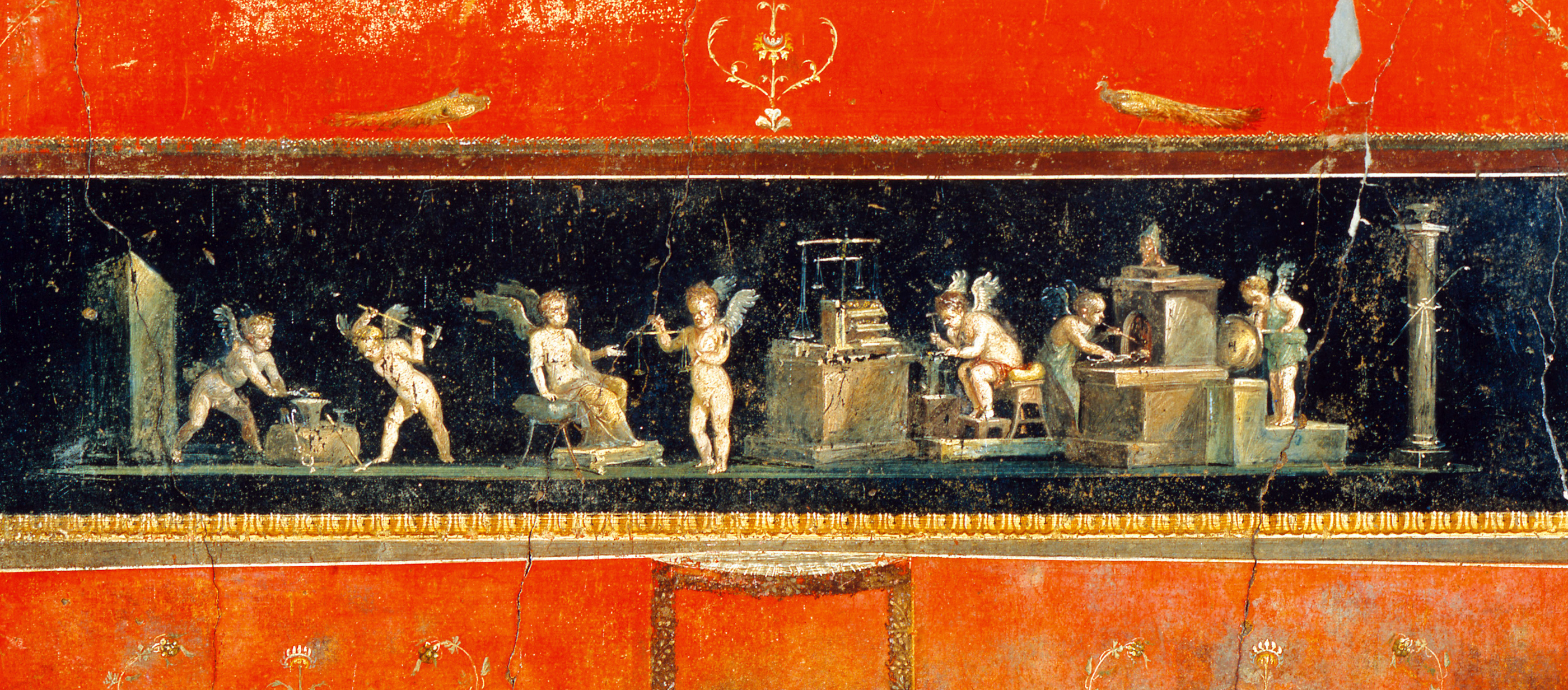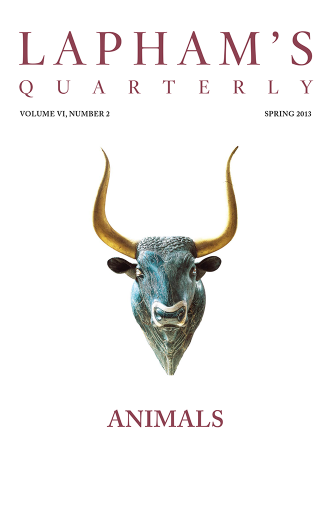If you want to know what God thinks of money, just look at the people he gave it to.
—Dorothy Parker,Funny Money
Is there really a difference between the “real” world currencies we use everyday and their funny-money alter egos used online in virtual worlds?
By Edward Castronova

A historical recreation of 1920s Berlin in the virtual online world Second Life by Jo Yardley. Image courtesy Jo Yardley.
In 1979, Richard Bartle and Roy Trubshaw, two undergraduates at the University of Essex, wrote a computer program called MUD: Multi-User Dungeon. If you logged into MUD, you shared the environment with other users. You gave yourself a name—perhaps “Edward”—and when you entered the command, “Move right,” the other users saw the result, “Edward moves right.” If you wrote, “Drop journal,” the machine would put your journal on the floor and everyone would read, “Edward puts his journal on the floor.” You could log in the next day and if nobody had taken the journal, you would read, “There is a journal sitting on the floor.” MUD was a virtual world: a space on a computer shared by many people, where objects persisted regardless of whether or not the people were logged in.
Today, virtual worlds are graphically rich, geographically massive, and heavily populated. In one world, Lord of the Rings Online, my wife and her girlfriends run around as elves and fight demons while chatting about sick kids and nutty husbands. Although the game is much more sophisticated than MUD, the essential features of the virtual world are the same: you use a character to navigate an immersive landscape that offers challenges in the form of monsters and quests. When you log off, the world remains, a canvas for collective storytelling.
There are obvious differences between a virtual world and our world. In a virtual world, there are dragons and elves and magic. But while the dragons are fantasy, the society is real. There’s not a single theory of human behavior violated by humans interacting virtually. People talk the same way, love the same way, shop the same way. Reputations, norms, prices, groups, and networks all work the same way as they do in the real world. The realism of these online societies has made them hugely popular. Gartner Research says that 80 percent of active Web users will, by 2012, have some sort of “avatar”—some sort of virtual character—in some sort of online world. That’s over 100 million people.

Cherubs working as metalsmiths and goldsmiths, fresco from the Casa dei Vettii, Pompeii, Italy.
Contrary to the stereotype that fantasy gamers are all fat kids in their moms’ basements, most players are in their twenties and thirties. They’re not isolated; they connect with friends and family online every night. They’re not stupid; they develop sharp strategic and tactical acumen to win games in virtual worlds.
Why would people give up their real lives for fantasy lives? For the vast majority of people in today’s economy, life is pretty boring. In the real world, workers often perform tedious tasks that fail to give them a sense of meaning. Virtual worlds provide these people with tasks that have significance: the dragons must be killed, the villages must be saved.
One of the things that remains undisturbed in the transition from the real to the virtual world is the market. Money, we are told in Economics 101, has three characteristics: it is a medium of exchange, a unit of account, and a store of value. All three services have been needed in every virtual world built to date. By containing permanent items that characters can own and trade, all virtual worlds either have by design, or evolve, a currency. This currency is used for exchange, for accounting, and for saving up.
Because the virtual currency serves these useful purposes, it has value. Nevermind that it’s virtual. The euro was a virtual currency for three years, existing only in databases, yet no one treated their euro accounts as valueless. Most value is virtual. The dollar is a virtual good: it only has value because we say it does. This is unsettling in the same way that atomic physics is unsettling. The first time you realize that your desk is made up of billions of little particles with vast reaches of empty space between them, you have a moment of unease. Lifting your elbows slowly off the surface, you think, what if the thing falls apart or explodes? Yet after a few moments of watching your desk remain utterly desk-like, solid, and reliable, you forget about the physics and put your elbows down again. In a similar way, the first time you realize that most things in the economy, and especially its money, have value only because of a social convention, you freeze, thinking, my God, what if the lady at Kroger refuses to accept my twenty-dollar bill? Where will I get my six-packs? But then she cheerfully takes your money, just like always, and you relax.
Once you accept that the dollar is virtual and yet has real value, you can accept that virtual goods and virtual money can have value too. If supply and demand work the same way in modern Manhattan as they did in ancient Athens—and I believe they do—then it’s no surprise that they operate as advertised in fantasy environments like Middle Earth and the Outer Galaxy. Things have value because people value them, and if people value magic wands and purple ponies, those things have value.
Virtual items actually trade for real money all the time (even though it is usually against the rules to do so). In World of Warcraft, an immensely popular virtual world with ten million players worldwide, people use an in-game currency called “gold” to buy armor, horses, and potions. Since earning gold is time-consuming, American and European players buy currency from enterprising businessmen who have set up sweatshops called “gold farms.” Julian Dibbell, writing for the New York Times, visited several gold farms in Nanjing, where he found young men working twelve-hour shifts around the clock, earning virtual gold for resale. The boss gathers the gold and sells it for real money on online retail sites to rich, time-starved Americans and Europeans. The sweatshop workers earn thirty cents an hour for playing a game all day, the boss makes his real-world profit, and the rich American gamer gets his virtual gold.
While solid numbers are hard to come by, World of Warcraft gold has consistently been valued above the Japanese yen. The gross throughput appears to be more than $1 billion per year. That is, more than $1 billion of real money is spent for virtual money every year. Because of this trade, we can calculate the value of all virtual economic transactions: the trade of virtual gold for dollars tells us what a gold piece is worth, in the same way that trading yen for dollars does. Expressed in terms of its real-world value, the fantasy economy has a GDP of $7–12 billion, comparable in size to those of countries like Jamaica, Guinea, and Nicaragua.
Virtual economies are based on behavior that’s completely normal. In some instances, this behavior has led to court cases where one player sues another for damages: Jones used his game character to steal a magic wand worth $7,000, and Smith wants compensation. Virtual worlds have even caused murder and suicide. A man in Korea played a game so long that he died of exhaustion—dead right there at the keyboard, expired in pursuit of castles in the virtual clouds.
The seriousness of these outcomes suggests that money is more than simply a medium of exchange, a unit of account, and a store of value. Money is also a way of keeping score. When I throw a football to my friend, it becomes a medium of exchange since I trade my right to throw it for her promise to throw it back to me. When my team scores a touchdown, the football becomes a unit of account: you earn six points each time you put it in the end zone. And when my team holds the football, choosing to keep it for a longer period of time in order to run out the clock, it becomes a store of value. More than just a tool, the football is an instrument for gauging progress toward a designated goal.
Money, footballs, and diamonds are fetishes to which human society attaches value far beyond mere use. In their subjective theory of value, economists have shown that the price of diamonds is driven by supply and demand, not “usefulness.” But economists have not applied the same reasoning to money. Don’t we all know people whose sole objective in life is to accumulate as much money as possible, and thereby win? Don’t companies encourage this kind of attitude and culture? When economist Robert Frank writes of the Winner-Take-All Society, he thinks he’s deploying a metaphor about our economy, but he’s not. An economy is a game: a designed goal environment with an uncertain outcome. The laws of a country design its economy, and money is the game’s standard of victory.
The brokers who jumped off buildings in 1929 were shocked to be losers. Why did they jump? Every “ruined” stock trader no doubt still had access to human capital—connections, know-how, intuition—that fairly quickly he could have turned into a handsome salary. He wouldn’t be super-rich anymore, but he’d have food to eat, a home to live in, and clothes to wear. Despite being “ruined,” a Wall Street trader in 1929 would still have more material wealth than all the people in Kansas whom he’d impoverished with his margin trading. The trader killed himself not because he was hungry but because he couldn’t stand being a loser in the game of Manhattan Money Madness.
The collapsed Korean gamer is no different from the self-defenestrated Wall Streeter. They’re both people who died for fear of losing an economic game. But the purpose of designing games is to help people have fun. It is not fun to die. Surely we can design economic games in which everyone has fun all the time and nobody gets killed. The game industry is in fact well advanced down that road. To designers, the purpose of money is to generate fun. Here’s an example: designers could give money to everybody in a virtual world. If you do nothing more than pick a virtual flower in a virtual field, there will be some merchant somewhere who will buy it from you. It’s tremendously easy to make money in virtual economies since there’s always something to do for pay, no matter your age, sex, or skills. Nobody is ever unemployed. Designers build it that way because they have found that people have more fun in an economy where everybody earns money all the time, almost without effort.
The game industry understands what economists don’t: that money is an entertainment object. Driven by the ever growing demand for livable fantasies, this industry is feverishly exploring the different ways money can be used to entertain players within a structured goal environment. If virtual economies have the potential to contribute a large portion of our GDP, children will eventually grow up treating virtual and real economies as more or less comparable systems. As the line between the virtual and real worlds disappears, people will begin to wonder why money is easy to earn in one economy and difficult in another. They will ask why the real-world economy can’t be more fun.
Albert Camus believed that the modern world confronted us with the task of Sisyphus: push a huge stone toward the top of a hill, watch it roll back down, and trudge to the bottom to push again. Repeat ad infinitum. There’s no advancement, no achievement, no glory, no meaning. In today’s economy, countless people perform tedious, Sisyphean tasks just to make a living.
Given a chance to redesign, the needed changes are obvious. First, lower the hills and shrink the rocks. Let people roll the rocks over the hills. Reward their achievement with money. Let them buy better-looking clothes. When they are ready for another challenge, give them a larger rock and a taller hill. Make sure that the goal is attainable: you don’t want to frustrate people or they will quit the game. On the other hand, if you keep the same small rocks and low hills, the players will become bored. Gradually escalate the difficulty, providing rewards for each completed challenge and varying the circumstances to prevent boredom: let them push a rock through a swamp, around a tree, or over your mother-in-law’s Volvo. Let people form groups to push as a team, and the players will create a community, a human village that faces each challenge together and succeeds against the odds.
Why should we continue to play a game we don’t enjoy? Why don’t we design something else? There’s no difference between a game developer and a government. Both serve polities and communities of interest. Both issue judgments and rulings. Both form policies that design economies. Eventually, people who play games in virtual worlds will start to ask, “Why can’t the world be more fun?” Money—“real” money—is about to become an object of game design.


